My Time on the Reserve: Stéphane Menu
May 15, 2013
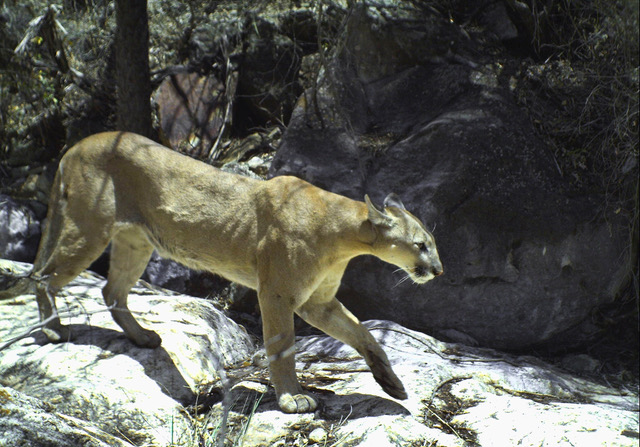
I left the snowy land of Ontario, Canada, to venture into northern Mexico for the first time. I was headed for the Northern Jaguar Reserve to volunteer with their habitat restoration work, as well as doing bird surveys and monitoring with trail cams.
As an ornithologist, I usually spend my spring and fall seasons monitoring migrations, and most of my summers are devoted to breeding bird studies. Canadian winters typically mean sparse fieldwork, so from time to time, I am eager to explore new geographic areas. Having learned of the Northern Jaguar Project, I was excited to be accepted as a volunteer.
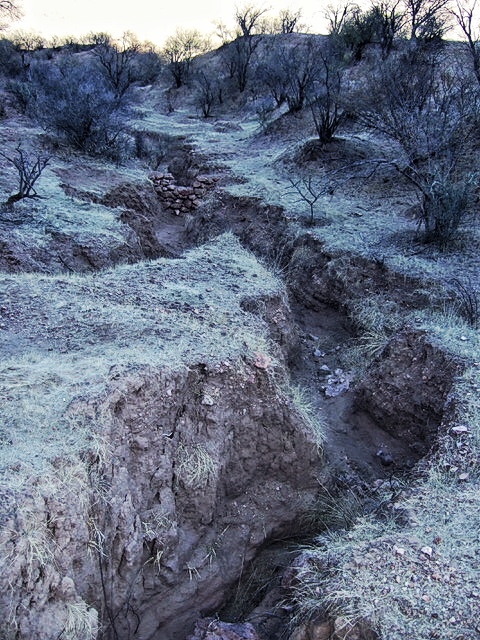
On arriving at the reserve, my first impressions were of a land of thorns, rocks, and dryness in a mad jumble of small mountain ranges going off in all directions. It felt like a place that required time to comprehend and appreciate. I loved the scenery at first sight, the infinite procession of mountains upon mountains, the depth of the blue sky, the seemingly emptiness of human presence.
There was a quality of silence I had never experienced before. Lacking were familiar sounds like the call of a gull, waves lapping on a shore, leaves rattling in a tree. I feel fortunate that I had time to simply be on the reserve. Time to begin to understand the lay of the land, time for a particular palm tree to become a landmark, time to go and explore small arroyos, and time to find new ways to move through the land.
I was at the reserve to help with restoration work, particularly gabion construction and buffelgrass removal. Gabions are small rock dams used to control erosion. For me, it very simply meant hauling rocks, lots of rocks. Big rocks, small rocks, medium rocks; we needed lots of rocks to build several gabions at El Carricito, a small ranch along the Río Aros. Deep gullies in the soft soil were rapidly expanding in a fractal pattern. It was sad to see the damage done by cattle in this area but encouraging to be part of the solution.
Buffelgrass is an invasive species that chokes native vegetation and presents a fire hazard. Off we went, pickaxe on the shoulder, to buffelgrass-covered slopes. For several hours during the mornings and late afternoons, we hunched over, deftly wielding our pickaxes, literally getting at the root of the problem in a slow, methodical progression.
It was a study in contrast. Gabion building was teamwork that required heavy lifting but for a long-lasting result. I compared it to the solitary, never-ending removal of plants that may or may not come back the next season. Every time another clump of buffelgrass was removed, it was another step in the right direction. More often than not, a small native plant would emerge from under the carpet of buffelgrass, free at last, and a living testimony of the usefulness of this back-breaking work.
It was not all work and no play. I found time to explore and survey birds. I was amazed at the bird diversity in this dry winter landscape. I detected almost 100 species with 34 “lifers” (species I observed for the first time)! Birds on the reserve are a fascinating mix of temperate and tropical species. It was thrilling to see a wintering hermit thrush in an arroyo where, minutes later, I also watched my first-ever elegant trogons!
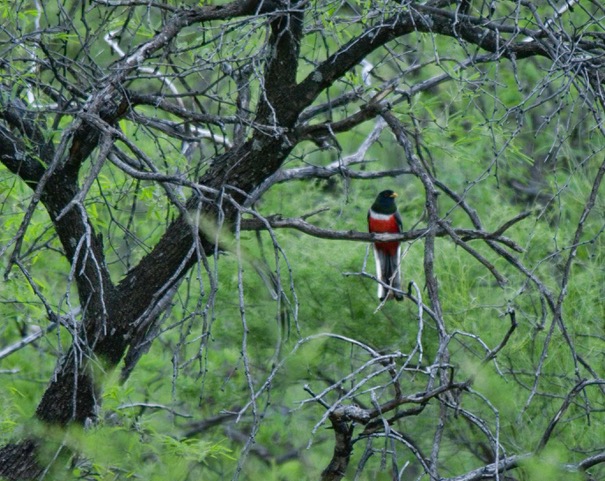
My most memorable sighting was of a bobcat. We sat and watched each other for 40 minutes! Its curiosity finally satiated, the bobcat walked away with unmistakable feline grace and quickly disappeared, as if swallowed by the Earth. The other wild cats of the reserve were detected only through tracks, scats, and the trail cams. But with some imagination, I was able to “see” a mountain lion squatting and drinking at a small pool, the water protected by big rocks.
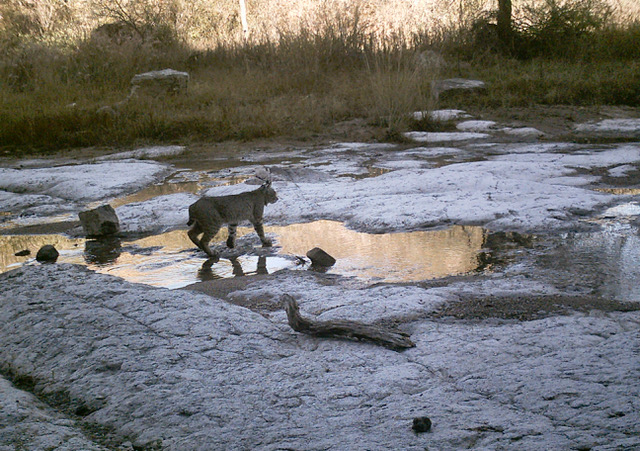
I returned to a still-snowy Ontario filled with incredible memories after my wonderful experience on the Northern Jaguar Reserve. It was extremely rewarding to help in a concrete, albeit small, way in restoring crucial habitats for jaguars.
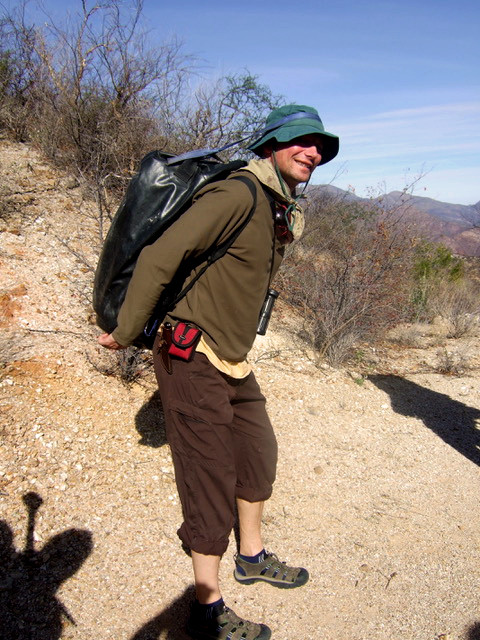
Stéphane Menu, Ph.D., is the station scientist at the Bruce Peninsula Bird Observatory in Ontario, Canada.
Photo of elegant trogon by Jim Rorabaugh
Photo of dry arroyo by Stéphane Menu
All motion-triggered camera photos taken
on the Northern Jaguar Reserve or Viviendo con Felinos ranches

